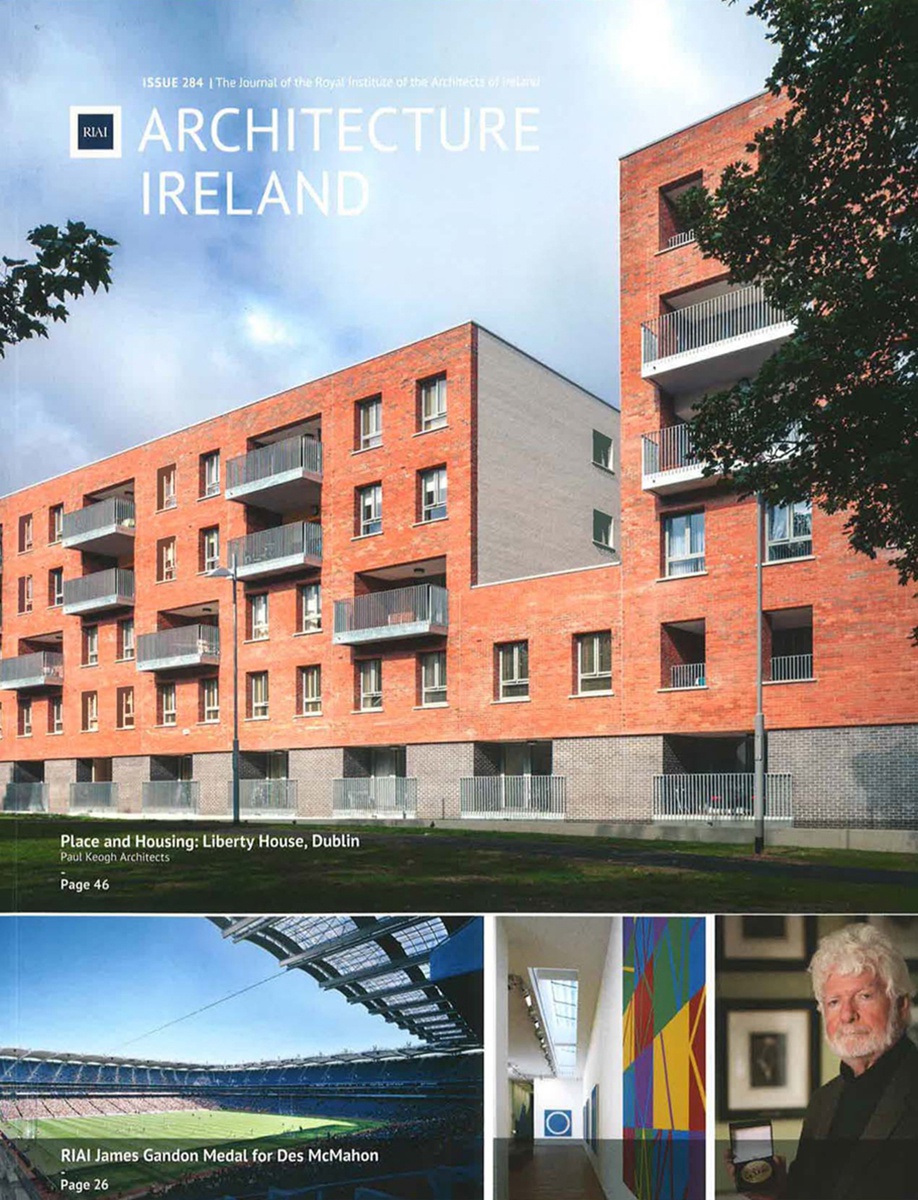Peabody Housing, Darbishire Place - Architecture Ireland
January 2016
Text Niall McLaughlin Architects
Images Nick Kane
Darbishire Place at Peabody’s Whitechapel Estate in East London completes an ensemble of six housing blocks surrounding an internal courtyard; the original block having been destroyed during the second World War. With a budqet in keeping with typical Peabody affordable housing projects,
the scheme is comprised of 13 new one, two, three and four-bed units , 54% of which are affordable. The design respects the massing and characteristics of the existing buildings on the estate and continues the idea of ‘open corners’, promoting easy pedestrian access and views between the courtyard and the surrounding streets.
Urban design was carefully considered; the eastern facade of new block aligns fronts John Fisher Street and with Block E to the north, while the south end relates closely to the adjacent Block J. The new building has a chamfered southwest corner, allowing views and light into the courtyard and creating a new pedestrian link between the spaces.
Planning constraints were within normal planning policy; the estate is not located in a conservation area, however the Conservation Officer took a particular interest due to the significance of the surrounding Peabody housing blocks, which were designed by Henry Darbishire in the 1870s. The existing blocks are five stories with repetitive window patterns reflecting their internal layouts. The openings are formed with brick reveals that are painted white, adding to the buildings’ particular Italianate character.
The facades in the new buildinq make a respectful reference to the surrounding buildings with the contrast between the external brick skin and the deep window reveals repeated and accentuated. The reveals are formed from prefabricated GRC blocks and occur around each window and balcony. These deep reveals taper to a fine edge, creating sharp repetitive frames and a compelling play of light and shadow across the facades.
The main entrance is from the courtyard side of the building, in keeping with the other blocks. It leads into a lobby that opens up towards the lift and the bottom of the staircase. The central circulation space, which tenants pass through every day, is flooded with natural light from the windows above. The staircase winds its way up around a dramatic central void, which creates visual connections between the landings.
The internal layouts are arranged around the single stair and lift core that provides access to 13 units over five floors. Most of their habitable rooms are oriented south or west, away from John Fisher Street where windows are subject to traffic noise. The building is Part M compliant and has a wheelchair accessible flat to the north of the ground floor.
The large balconies to the new flats are internal to maintain the solid and object like character of the new building. They are open to at least two sides with nearly full width openings and a low solid balustrade to maximise daylight into the living rooms located adjacent to them.
